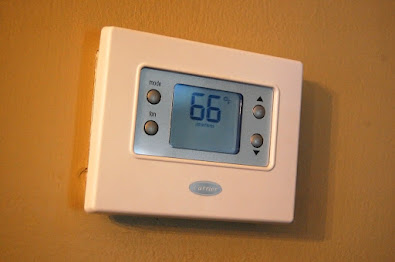Energy-Saving Strategies for Home Cooling: Tips to Reduce Your Carbon Footprint
Reducing your carbon footprint and saving energy while cooling your home is a great way to contribute to a more sustainable future. Here are some energy-saving strategies and tips to help you achieve that:
- Use a programmable thermostat: Set your thermostat to higher temperatures when you're not at home or during the night when you're sleeping. This helps reduce energy consumption by allowing your cooling system to work less when needed.
- Optimize natural ventilation: Open windows and use natural ventilation during cooler times, such as mornings and evenings. Position fans strategically to enhance the airflow and create a cross-breeze effect.
- Insulate your home: Proper insulation helps keep the cool air inside your home, reducing the need for excessive cooling. Insulate walls, attics, and floors, and seal any air leaks around windows and doors.
- Use ceiling fans: Ceiling fans create a wind-chill effect, making you feel cooler without significantly reducing the temperature. Use them with your air conditioner to help circulate the cool air efficiently.
- Maintain your cooling system: Regularly clean or replace air filters to ensure proper airflow. Schedule professional maintenance to keep your cooling system running efficiently, as a well-maintained system consumes less energy.
- Consider energy-efficient cooling systems: If you're in the market for a new cooling system, opt for energy-efficient models with high SEER (Seasonal Energy Efficiency Ratio) ratings. Search for the ENERGY STAR label, which indicates that the appliance meets energy efficiency standards.
- Utilize shading and blinds: Close curtains, blinds, or shades during the day to block out sunlight and prevent heat gain. Consider installing reflective window films or shades to further reduce heat transfer.
- Use energy-efficient lighting: Incandescent bulbs generate a significant amount of heat. Replace them with energy-efficient LED bulbs that produce less heat and consume less electricity.
- Minimize heat-generating activities: Appliances such as ovens, dishwashers, and dryers generate heat. Use them during cooler times of the day, or consider using more energy-efficient alternatives. For example, air-drying clothes instead of using the dryer.
- Landscaping for shade: Plant trees or install outdoor shading structures like pergolas or awnings to provide shade around your home, reducing direct sunlight and heat absorption.
- Opt for natural cooling methods: Use evaporative or swamp coolers in dry climates instead of traditional air conditioning units. They use less energy and work effectively in regions with low humidity.
- Be mindful of your overall energy consumption: Reduce other energy-intensive activities in your home to offset the energy used for cooling. Switch to energy-efficient appliances, switch off lights and electronic devices when not in use, and consider using renewable energy sources like solar panels.
Implementing these strategies can reduce your carbon footprint and save energy while keeping your home cool and comfortable.




Comments
Post a Comment